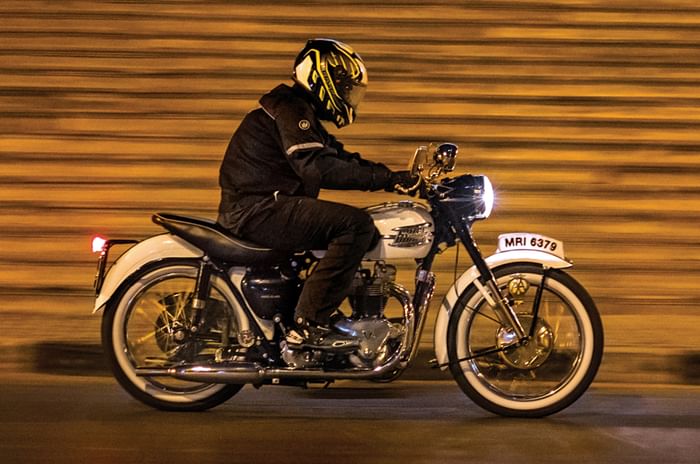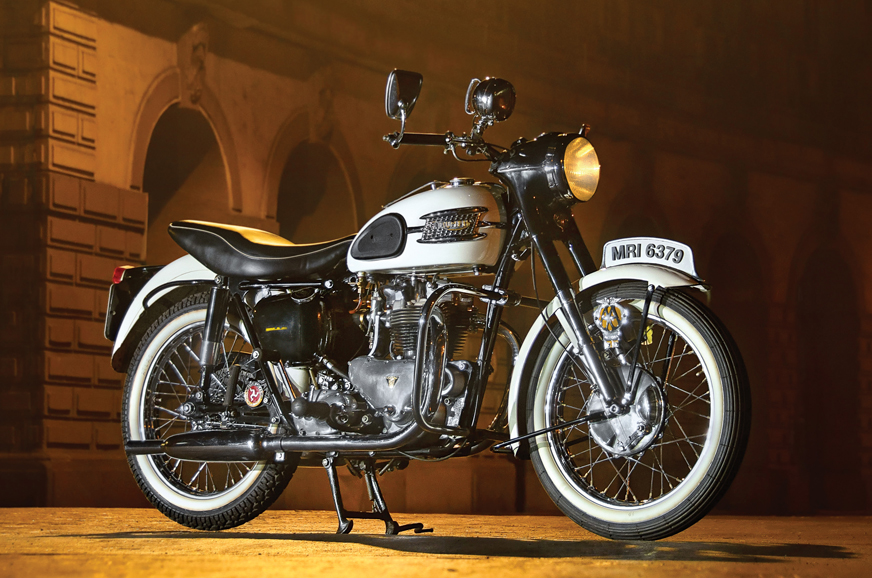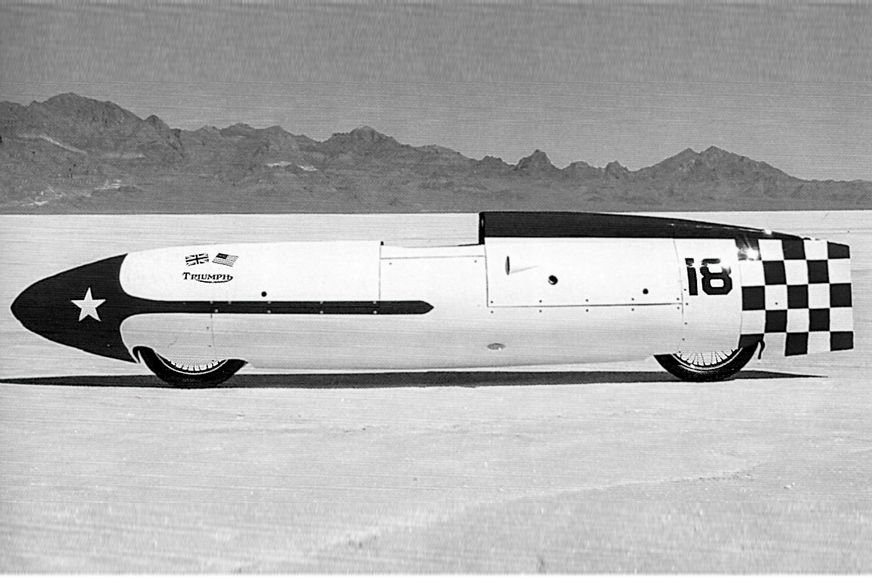I ’m not averse to swinging a leg over a borrowed motorcycle, but silence can be an inconvenient betrayer. It was well past midnight when my turn to ride this motorcycle arrived, and there was nothing I could do to come across as confident or trustworthy. Within the isolation of my helmet, however, I was enjoying the anxiety. A motorcycle that can intimidate is infinitely more appealing than one that cannot – or so it appears to my juvenile mind. Moreover, I know hardly anyone who’d turn down an opportunity to ride the motorcycle you see here – a 1957 Triumph Tiger T110.
You would expect a motorcycle such as the Triumph Tiger to be a monumental chapter in motorcycle history, and you’d be right. The T110, however, went further. It was sensational, a true fruit of labour for Triumph which, by 1953, had established itself as a performance-driven manufacturer but without a sizeable footprint in the land of the free. Being British and therefore having as much in common with the Las Vegas strip as a cardigan, however, Triumph realised it needed to build a faster machine. The T110, which was claimed to be capable of a 110mph (177kph) top speed (that should explain the name), was the answer to this need and, sold as a 1954 model in its first year of production, it was the fastest motorcycle Triumph had ever built.

In the hazy amber glow of a typical Mumbai midnight, the T110 looked like it belonged. This motorcycle, or another one like it, perhaps, was probably right here in a different era – one in which nobody took pictures of their food in an American coffee franchise that serves anything but. Amidst the towering Victorian heritage structures, the T110 blended in effortlessly. I couldn’t help but notice its stance, which was rather matter-of-fact, especially for a motorcycle that was the fastest its maker could come up with. It was neither as brawny as a Norton Manx nor as ornate as a Velocette Venom, but it was handsome. The Tiger T110 was built around a singular purpose – speed – and you’d know it if you knew where to look. The air-vented drum, the compact single-carb twin-cylinder engine with a lightweight alloy cylinder head, the tapered Brooks seat... the details give it away in an enticingly discreet manner. Well, all details except one. Now, ‘World Motorcycle Speed Record Holder’ is hardly something you see engraved on a motorcycle’s headlight nacelle every day, so it’s bound to stoke one’s inquisitiveness.
Xereus Zend, from the Vintage Zoroastrian Bikers of Bombay (VZBB) group, comes to the rescue. He also happens to own this motorcycle and together, with Rahat Hussein Khan, his soft-spoken restorer, they obsess over the T110 like doting parents would. Rahat, a motorcycle mechanic with decades of experience, is a man of few words, but, in his relentless pursuit of perfection, can work magic. Xereus, meanwhile, looks straight out of a Bollywood flick but doesn’t hesitate for a moment before getting his hands greasy. Not that he needs to, with the level of restoration his bike has been put through, of course. He also doesn’t need to be sweating it out after a long day at work, helping me park the motorcycle at varied angles for the purpose of photography, but that’s just the kind of hands-on enthusiast he is. Oh, wait – I almost forgot – what’s with that engraving then? Xereus brings up a name I’ve never heard before – Johnny Allen. It was on September 6, 1956, that Allen, astride a heavily modified Tiger T110 called the Texas Ceegar, secured the motorcycle land-speed record at the Bonneville Salt Flats. Having clocked a top speed of 344.6kph, Allen, and Triumph, had made history and the latter was certainly in the mood to let the world know about its feat. The engraving – a priceless feature to those in the possession of it – thus made it to the 1957 models of the T110. Xereus tried but couldn’t conceal the tinge of pride in his narration. It’s well deserved, too!
To own a motorcycle such as this one certainly is a matter of whether you can afford it, but to keep one running in good health with meticulous attention to detail isn’t as much about money as it is about passion. In a time when motorcycles are bought, ridden and trashed in about as much time as it takes you to regrow a stubble, motorcycles like this Tiger T110 stand tall as a reminder of a distant era. An era in which Triumph was busy making history – the very history most of its present-day motorcycles wear proudly on their sleeves. And this is why classic motorcycles – be it a puny 50cc two-stroke or a fire-breathing 900cc triple – deserve respect. Because while everyone is busy outclassing evolution and physics, hardly anyone is making history anymore.
It was nearly 3am when I realised I still hadn’t ridden the T110. There is something so serenely consuming about it; I wonder if Xereus ends up not showing up at work on most days of the week, just so he can stay indoors and look at his prized steed. Since this is a liberty only he can afford, I decided to ask, and the answer was, thankfully, in the affirmative. In the next two minutes, I had hurriedly put on my riding gear and was ready to go. The starting procedure is simple enough – there is no key to flick, so just turn the fuel tap on, pull the decompress lever to set the pressure in the combustion chamber right, and kick. Do it right and you’re instantly treated to a crisp but bassy rumble that can only emerge from a large-capacity British parallel-twin motor. The 649cc, OHV motor was alive and there was no turning back now. There was a lot of stalling to do, however, and so I did. Thrice. In about thirty feet. Talk about being spoilt rotten by slipper clutches, quick shifters, auto-blippers and the like!
It did take me an elaborate moment to re-acquaint myself with the gearshift mounted on the wrong side (or right – it’s a matter of perspective), but past the initial hiccups (mine, that is), the T110 came into its own. That it was designed for speed was given away in an instant, firstly because of how effortlessly it accelerated and secondly, because the brakes didn’t seem too adequate for the job. Given that the average life expectancy in Britain in the 1950s was 65, it must have been safe for its time, surely. In any case, the T110 was designed for speed, not for slowing down, and if someone lost a limb in the process of finding out, they just sewed a new one on. This is hugely unlike today, when such things are addressed by lawyers and, more commonly, open letters on the Internet.
In the dead of the night, with the T110’s headlight (and the accessory searchlight – it was sold as a cop bike as well!) lighting up the dark alleys, the sensation of speed had amplified. The throbbing pulse from the throttle twist grip was intent on getting me to do the unlawful, but I had to resist. This is a fun motorcycle to ride, yes, but it’s, more importantly, a well-preserved chunk of history that, given a chance, can outlast the future. Above all else, though, the T110 is a motorcycle that is pure in principle and intent. The T110 may not be the greatest motorcycle of all time, but it’s a beautiful machine built around the concept of man and his love for speed. And sometimes, it can be as simple as that.



